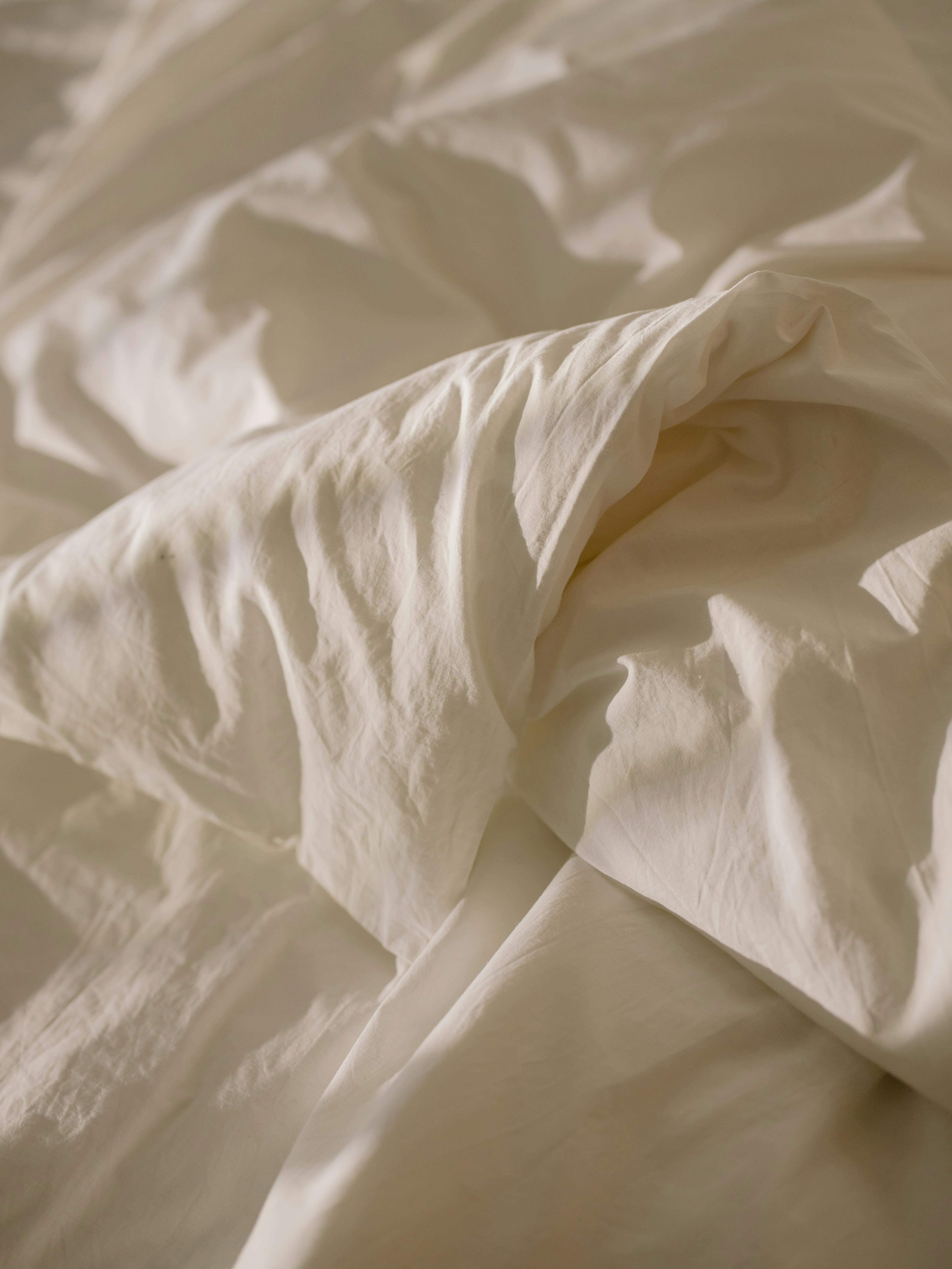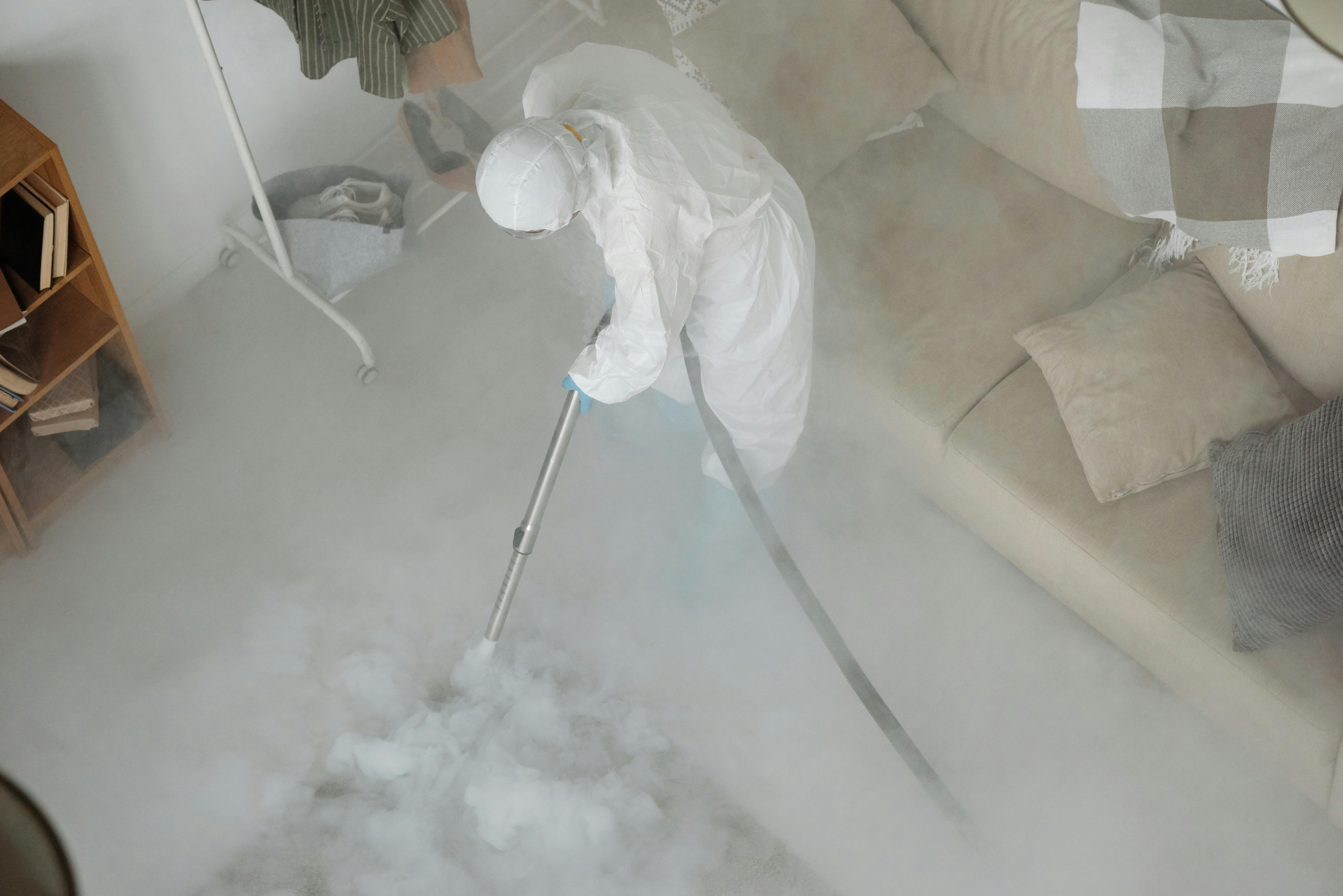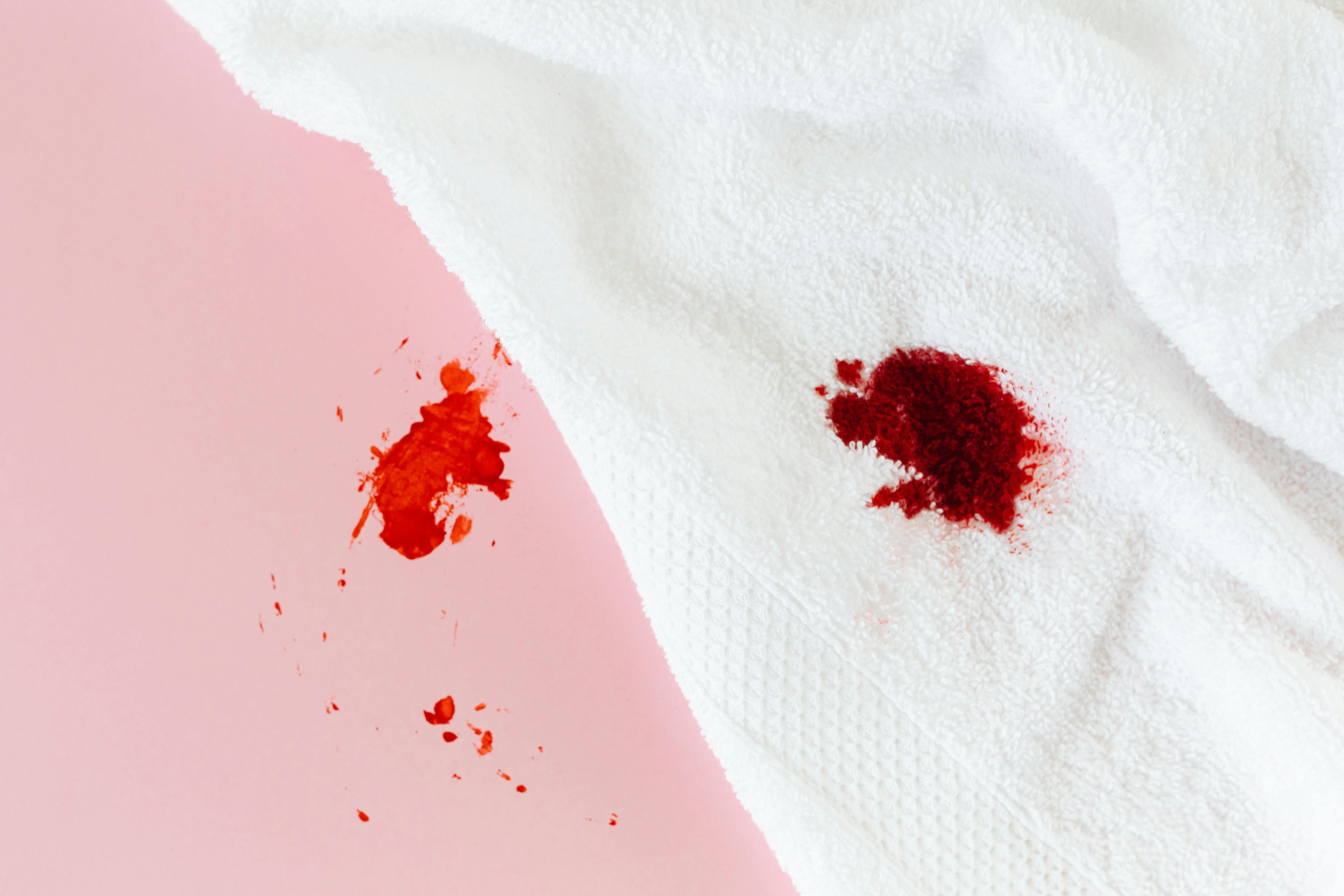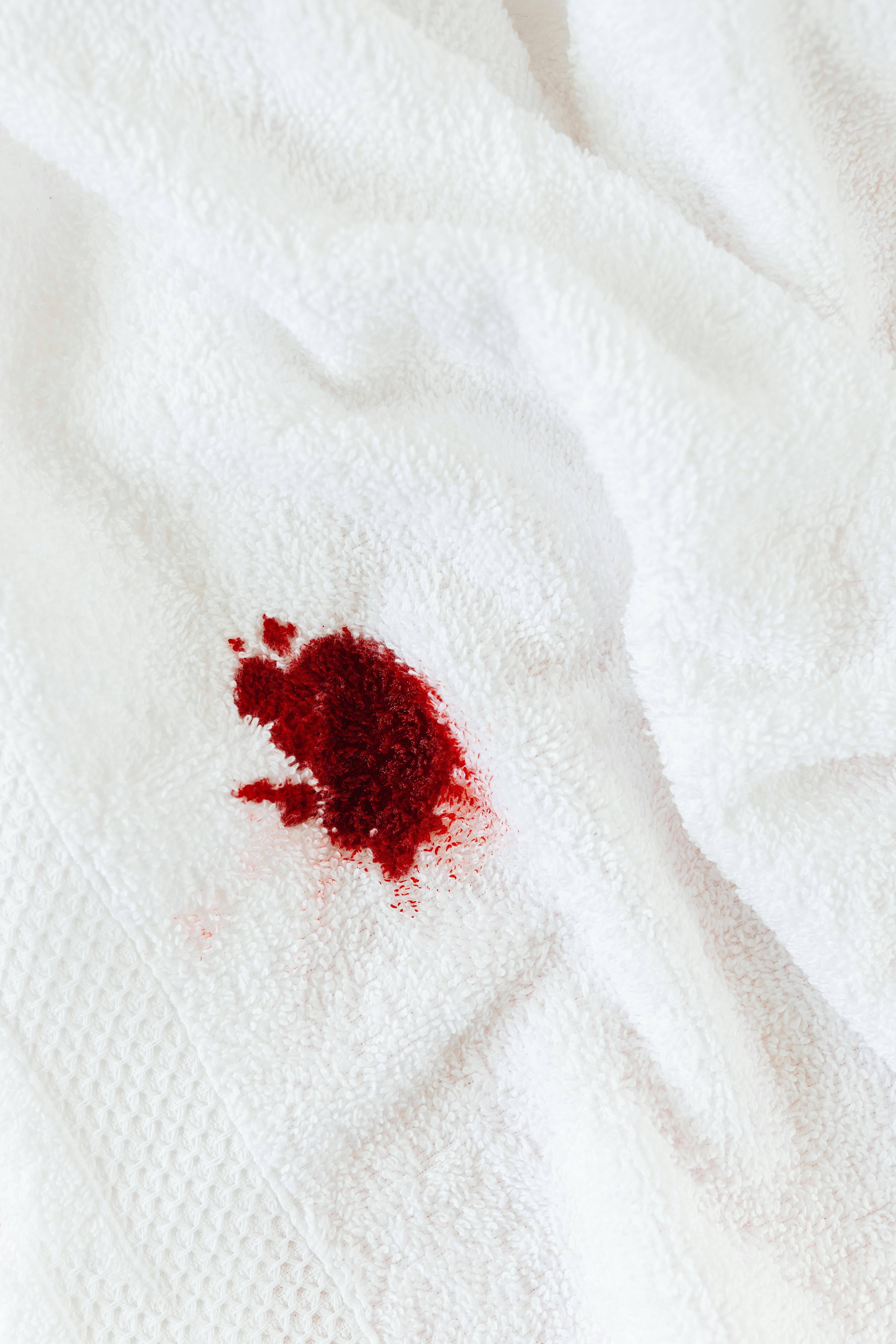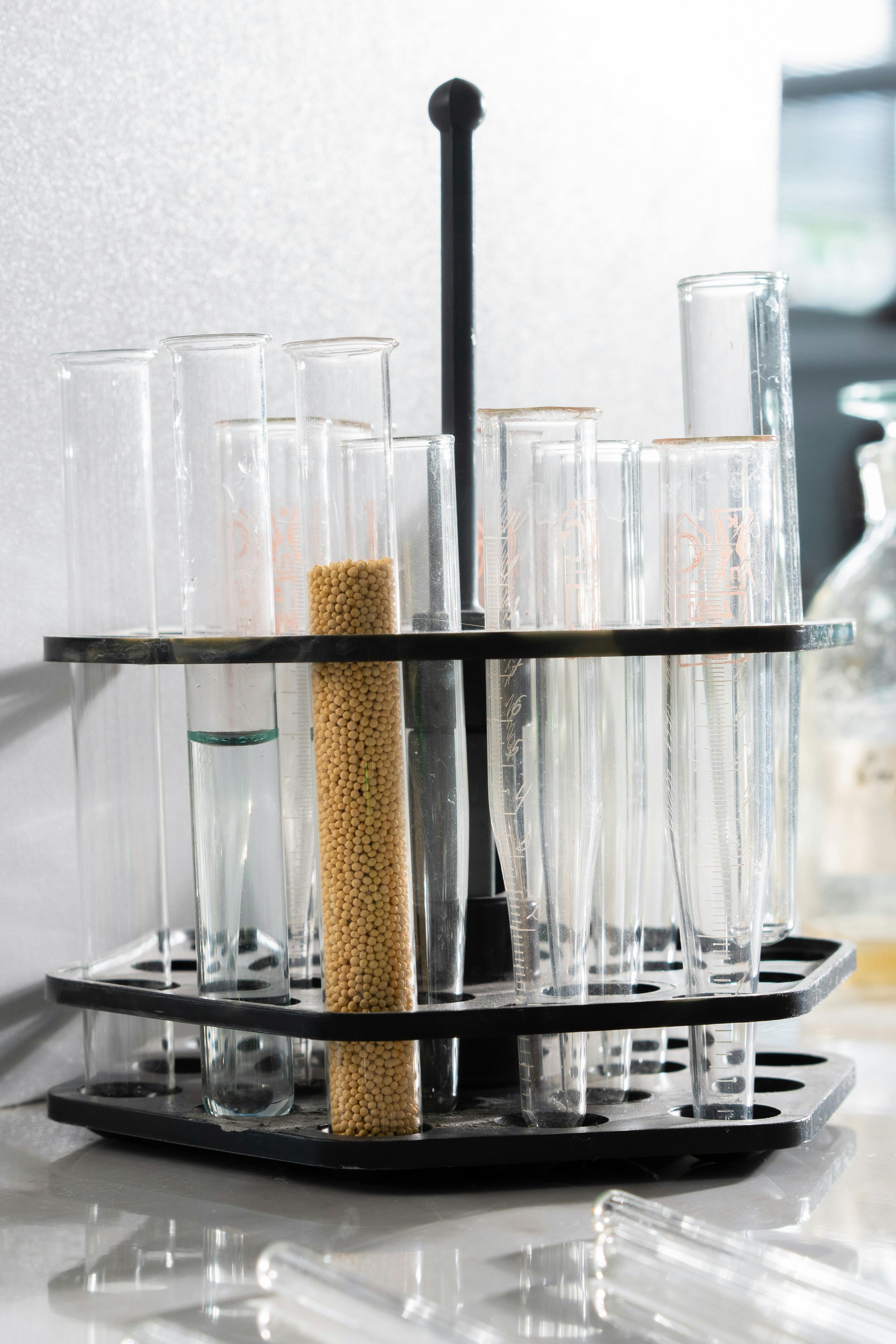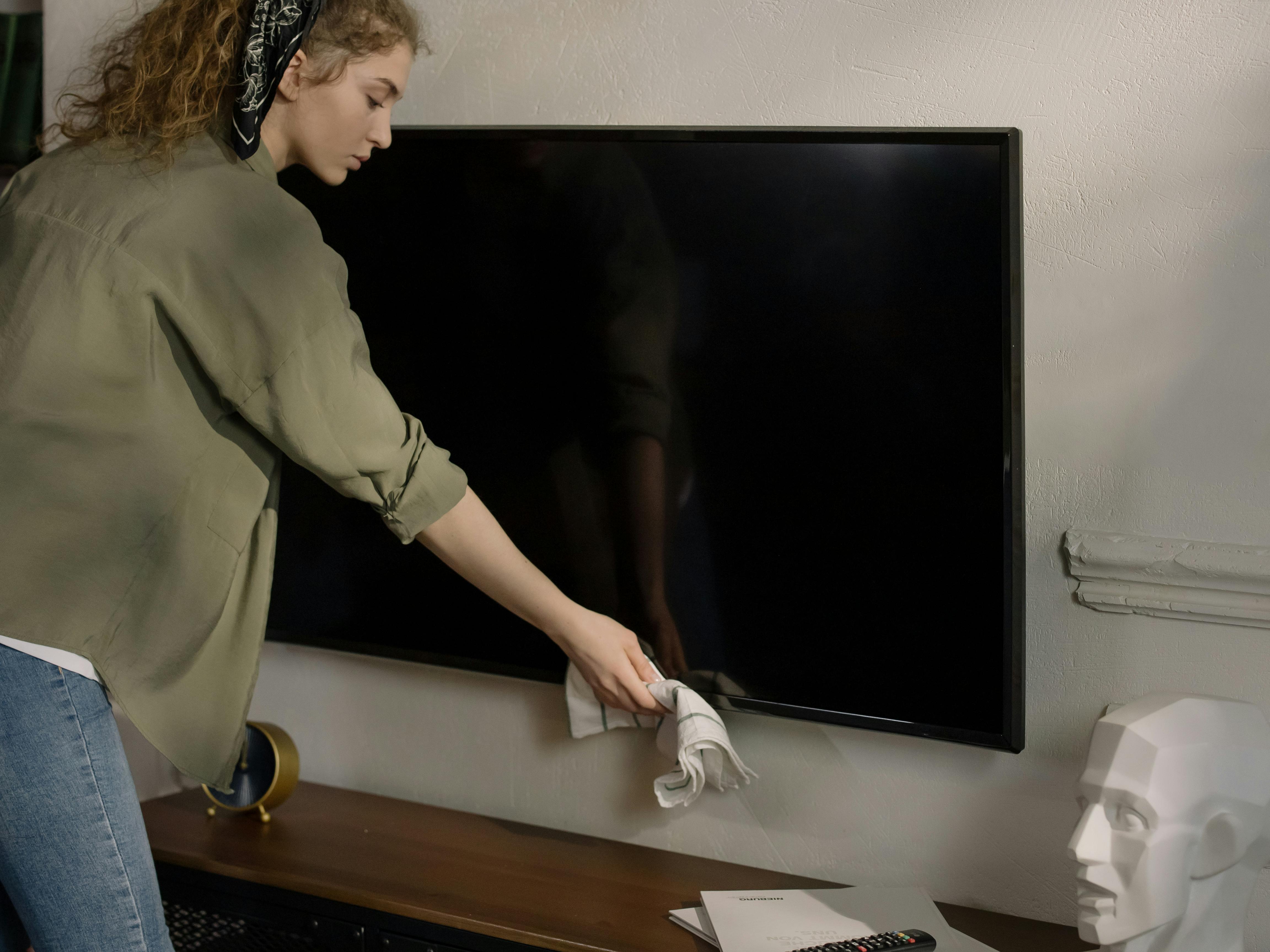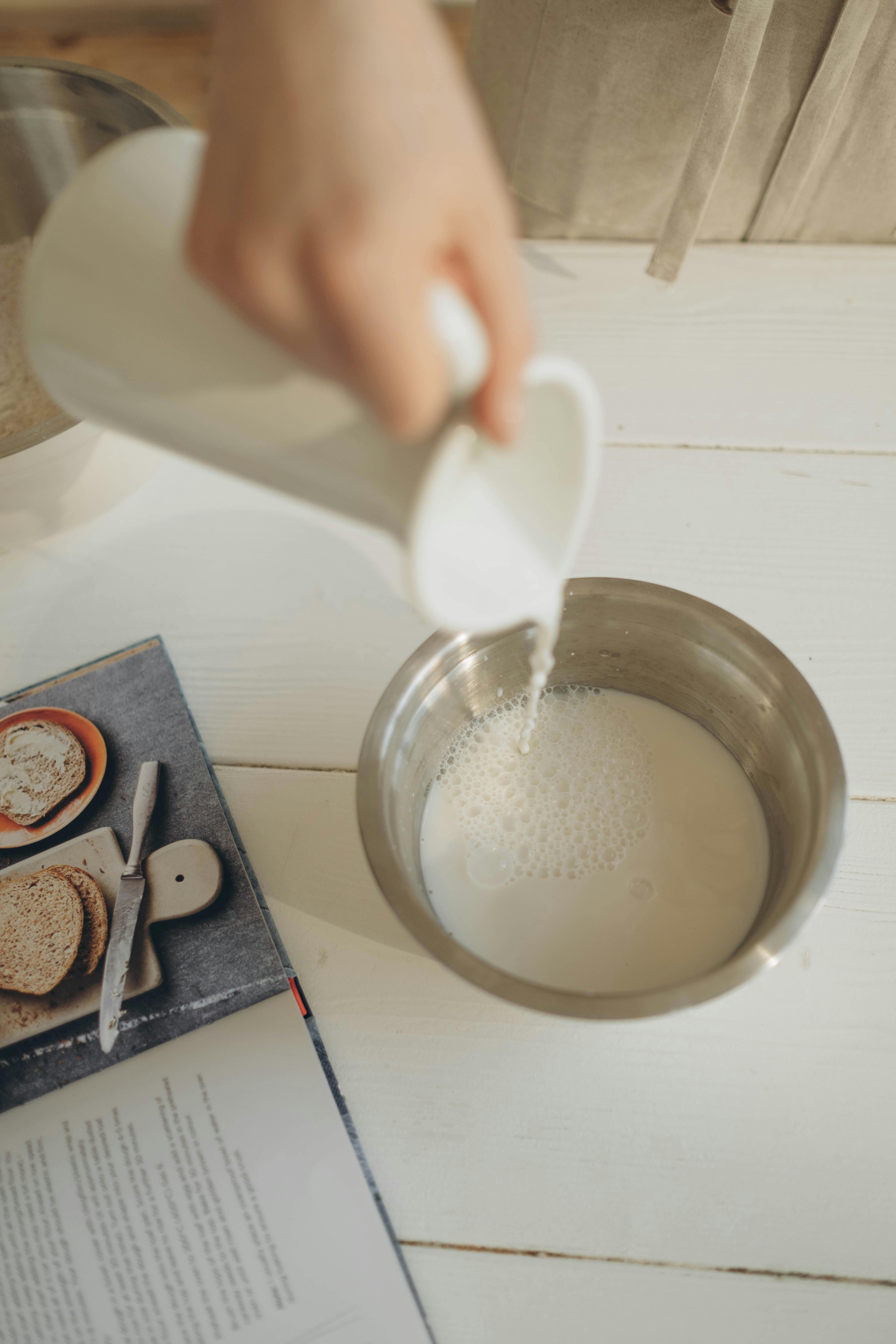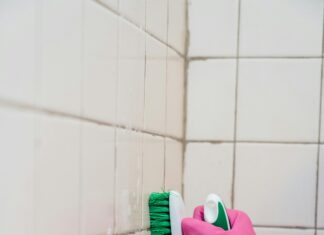Are you tired of waking up with itchy skin, sneezing fits, or unexplained allergies? It might be time to tackle the hidden enemy lurking in your mattress – dust mites in your bed! This article dives deep into how to remove dust mites from your bed, revealing easy tips that work to reclaim your sleep space and boost your health. Dust mites are microscopic creatures that thrive in warm, humid environments like your bedding, feeding on dead skin cells. If you’ve ever wondered how to get rid of dust mites in your mattress naturally or searched for effective dust mite removal techniques, you’re in the right place. We’ll uncover proven strategies that not only eliminate these pesky allergens but also prevent them from coming back.
Why is it so important to control dust mites? These tiny pests are a leading cause of allergic reactions and asthma attacks worldwide. Understanding how to remove dust mites from your bed can significantly improve your quality of life, especially if you suffer from respiratory issues or skin irritations. You don’t need expensive treatments or complicated gadgets; many of the best dust mite removal hacks involve simple household solutions you can implement today. Curious about which bedding materials repel dust mites or the best laundry routine to keep them away? Keep reading to discover expert tips and surprising facts that can transform your bedroom into a dust mite-free sanctuary!
Now, let’s explore some practical and easy methods for dust mite removal from mattresses. One highly recommended step is to wash your bedding in hot water regularly, as temperatures above 130°F (54°C) kill dust mites effectively. Using allergen-proof mattress and pillow covers creates a barrier that prevents mites from embedding themselves deep into your bedding. Additionally, vacuuming your mattress with a HEPA filter vacuum cleaner helps remove surface dust and mite debris. Combine these habits with maintaining low humidity levels in your bedroom—because dust mites thrive in moist environments—and you’ll be well on your way to a cleaner, healthier sleep environment.
7 Proven Methods to Effectively Remove Dust Mites from Your Bed and Improve Sleep Quality

If you ever wake up sneezing, coughing, or with itchy eyes, your bed might be the culprit. Dust mites, tiny creatures invisible to our eyes, thrive in bedding and can seriously mess with your sleep quality. They’re not just creepy—these microscopic bugs are linked to allergies and asthma. But don’t worry, getting rid of them isn’t rocket science. Here’s 7 proven methods to effectively remove dust mites from your bed and improve sleep quality, with easy tips that actually work.
What Are Dust Mites and Why They Matter?
Dust mites are tiny arthropods, relatives of spiders and ticks, that feed on shed human skin cells. They love warm, humid places, and your bed is their perfect habitat because you shed a lot of skin there daily. A single gram of dust can contain hundreds of dust mites!
Historically, dust mites were first identified in the early 20th century when scientists noticed their link to allergic reactions. Since then, researchers have found that these tiny pests can worsen rhinitis, eczema, and asthma. So, removing them is not just about hygiene—it’s about health.
7 Proven Methods to Remove Dust Mites from Your Bed
Wash Bedding Frequently in Hot Water
Washing sheets, pillowcases, and blankets in hot water above 130°F (54°C) kills dust mites effectively. Cold water just isn’t enough to destroy them. Experts recommend washing bedding every 1-2 weeks to keep the population under control.Use Dust Mite-Proof Covers
Encase mattresses, pillows, and box springs in zippered dust mite-proof covers made from tightly woven fabric. These barriers prevent dust mites from getting in or out, reducing exposure significantly.Vacuum Mattress and Mattress Pads
Regular vacuuming with a HEPA filter vacuum cleaner removes dust mites and their waste. Vacuum at least once a week, paying attention to seams and crevices where mites hide.Reduce Bedroom Humidity
Dust mites thrive in humidity above 50%. Using a dehumidifier or air conditioner to keep humidity between 30-50% makes your bedroom less inviting for mites. You can also increase ventilation by opening windows when weather permits.Freeze Pillows and Soft Toys
If washing isn’t possible, freezing items for 24 hours can kill dust mites. Place the pillows or stuffed animals in a plastic bag before putting into the freezer to avoid moisture damage.Use Natural Remedies
Some people swear by essential oils like tea tree oil or eucalyptus sprayed lightly on bedding to deter dust mites. Although not scientifically proven 100%, these natural remedies can reduce mite numbers and add a fresh scent.Replace Old Bedding Regularly
Over time, mattresses and pillows accumulate dust mite populations that can’t be fully removed. Experts recommend replacing pillows every 1-2 years and mattresses every 8-10 years to maintain a healthy sleeping environment.
Quick Comparison: Washing vs Freezing Bedding
| Method | Effectiveness | Convenience | Cost | Notes |
|---|---|---|---|---|
| Washing Hot Water | High – kills mites | Moderate – frequent | Low | Best for washable items only |
| Freezing | Moderate – kills mites | Easy but slow | Free | Good for non-washable soft toys |
Easy Tips That Work: Practical Advice for Dust Mite Control
- Keep pets off the bed because they bring in more allergens and mites.
- Avoid heavy curtains and carpets in the bedroom as they harbor dust mites too.
- Use washable curtains or blinds for easier cleaning.
- Change your vacuum filter regularly to maintain suction power and efficiency.
- Sunlight helps! Open your windows and let the sun shine on your bedding occasionally to reduce mite populations naturally.
Why Removing Dust Mites Improves Sleep Quality
Dust mites produce waste and shed body parts that trigger allergic reactions in many people. These allergens irritate nasal passages and skin, causing sneezing, congestion, and itching—making it hard to fall asleep or stay asleep. According to the American Academy of Allergy, Asthma & Immunology, reducing dust mites in your sleeping environment can lead to better breathing and less nighttime disruption.
Fun Fact: Dust Mites and Their Size
Dust mites measure about 0.2 to 0.3 millimeters long—so tiny that they look like tiny specks under a microscope. Even though they don’t bite or sting, their presence can cause more trouble than you think!
Summary Checklist for Dust Mite Removal
- Wash bedding weekly in hot water
- Use mite-proof mattress and pillow covers
- Vacuum mattress weekly with HEPA vacuum
- Maintain bedroom humidity below 50%
- Freeze non-washable items
How Often Should You Clean Your Mattress to Eliminate Dust Mites for Good?

When you think about cleaning your home, the mattress usually don’t come first in mind, right? But, if you want to have a healthier sleep and get rid of those pesky dust mites for good, cleaning your mattress is a must-do task. Dust mites are tiny creatures that live in your bedding, and they can cause allergic reactions, asthma, and other respiratory problems. So, how often should you clean your mattress to eliminate dust mites? And more importantly, how to remove dust mites from your bed effectively? Let’s dive into this dusty topic!
How Often Should You Clean Your Mattress to Eliminate Dust Mites?
First thing first, dust mites love warm, humid environments and feed on dead skin cells. Your mattress is a perfect home for them because you spend hours lying on it every night, shedding skin and sweating. Experts recommend cleaning your mattress every 1 to 3 months to keep dust mites at bay. However, if you are allergy sufferer or have asthma, cleaning it more frequently, like once a month, is better to reduce symptoms.
Historically, before modern vacuum cleaners and mattress protectors, people used to beat their mattresses outside to remove dust and mites. This method worked somewhat but wasn’t 100% effective. Today, we have better tools and cleaning methods that can help you fight dust mites more efficiently.
How To Remove Dust Mites From Your Bed: Easy Tips That Work
Removing dust mites need more than just vacuuming sometimes. Here are some practical tips that you can easily apply at home without spending a fortune.
- Vacuum Regularly: Use a vacuum cleaner with a HEPA filter on your mattress at least once a month. This helps suck up dust, dead skin, and dust mites.
- Wash Bedding Weekly: Your sheets, pillowcases, and blankets should be washed in hot water (at least 130°F or 54°C) every week. Hot water kills dust mites and removes allergens.
- Use Mattress Protectors: Invest in allergen-proof mattress and pillow covers. These zippered encasements prevent dust mites from penetrating your mattress and make cleaning easier.
- Freeze Pillows and Small Bedding: If washing isn’t possible, you can place pillows or stuffed toys in a plastic bag and freeze them overnight. Cold temperatures kill dust mites effectively.
- Sun Exposure: Sunlight is a natural disinfectant. Once a month, take your mattress or bedding outside for a few hours under direct sunlight to reduce moisture and kill mites.
- Reduce Humidity: Dust mites thrive in humid environments. Using a dehumidifier or air conditioner to keep indoor humidity below 50% can limit their growth.
Dust Mites Vs. Bed Bugs: What’s the Difference?
People often confuse dust mites with bed bugs, but they are very different creatures. Dust mites are microscopic arachnids that feed on dead skin cells, while bed bugs are visible insects that bite humans and feed on blood.
Here’s a quick comparison table:
| Feature | Dust Mites | Bed Bugs |
|---|---|---|
| Size | Microscopic (0.2-0.3 mm) | Visible (4-5 mm) |
| Diet | Dead skin cells | Human blood |
| Health Impact | Allergies, asthma triggers | Bites causing itching, rash |
| Location | Mattresses, pillows, carpets | Mattresses, furniture cracks |
| Removal Method | Cleaning, washing, vacuuming | Insecticides, professional pest control |
Understanding this difference is important because methods to remove dust mites won’t necessarily work for bed bugs and vice versa.
Practical Example: How I Clean My Mattress To Get Rid Of Dust Mites
I live in New York where the humidity can get high during summer, making dust mites a big problem. I clean my mattress every 2 months, but during allergy season, I vacuum it every 2 weeks. Here is how I do it step-by-step:
- Remove all bedding and wash them in hot water.
- Vacuum the mattress thoroughly with a HEPA vacuum cleaner.
- Spray a mixture of water and a few drops of tea tree oil (natural mite repellent) lightly on the mattress.
- Let the mattress air out in sunlight for 2-3 hours.
- Cover the mattress with an allergen-proof encasement.
- Use a dehumidifier in my bedroom to keep humidity low.
This routine really helped to reduce my allergy symptoms and keeps my bed fresh and clean.
Quick Checklist: What You Need To Remove Dust Mites From Your Mattress
- HEPA vacuum cleaner
- Hot water washing machine
- Allergen-proof mattress and pillow covers
- Dehumidifier or air conditioner
- Natural sprays (optional, like tea tree oil)
- Plastic bags for freezing small items
Why Cleaning Your Mattress
Easy DIY Tips to Kill Dust Mites in Bedding Without Harsh Chemicals

Dust mites are tiny creatures that live in your bedding, and they can cause allergies, asthma, and irritation for many people. Most of us don’t think about these microscopic bugs, but they are everywhere, especially in places where we sleep. If you live in New York or anywhere else, you probably want to know how to remove dust mites from your bed without using harsh chemicals that could harm your skin or the environment. Luckily, there are easy DIY tips to kill dust mites in bedding that really work and are safe for your family.
What Are Dust Mites and Why Should You Care?
Dust mites are microscopic arachnids that feed on dead skin cells from humans and pets. They thrive in warm, humid environments—like your mattress, pillows, and blankets. According to studies, a typical mattress can contain anywhere from 100,000 to 10 million dust mites! These creatures don’t bite, but their waste products and body parts trigger allergic reactions in many people.
Historically, people didn’t know much about dust mites until the 20th century when allergy research became more advanced. Now, it’s well understood that controlling dust mites is a key step in reducing allergy symptoms. In New York’s humid summers and cold, dry winters, dust mite populations can fluctuate, so it’s important to keep your bedding clean year-round.
Easy Tips to Kill Dust Mites in Bedding Without Harsh Chemicals
If you want to avoid chemical sprays or treatments, you’re not alone. Many DIY enthusiasts prefer natural methods that are just as effective. Here are some practical steps you can take:
- Wash Bedding Weekly in Hot Water: Wash all sheets, pillowcases, and blankets at least once a week using water temperature of 130°F or higher. Hot water kills dust mites and removes allergens.
- Use Mattress and Pillow Covers: Special allergen-proof covers made from tightly woven fabric prevent dust mites from entering or escaping your mattress and pillows.
- Freeze Small Items: For non-washable items like stuffed toys, placing them in the freezer overnight can kill dust mites.
- Vacuum Regularly: Use a vacuum cleaner with a HEPA filter to remove dust and mites from mattresses and carpets.
- Sunlight Exposure: Sunlight helps reduce moisture and kills dust mites. Occasionally, put your bedding outside to air out and dry under direct sun.
- Reduce Humidity: Dust mites love humid environments. Use a dehumidifier to keep indoor humidity below 50%.
How To Remove Dust Mites From Your Bed: A Simple Outline
Here’s a step-by-step plan you can try at home:
- Strip all bedding and wash in hot water.
- Vacuum your mattress thoroughly, especially seams and crevices.
- Spray mattress with a natural solution like diluted tea tree oil (known for its mite-killing properties).
- Cover mattress with allergen-proof case.
- Place pillows in the dryer on high heat for 15-20 minutes or wash them if possible.
- Reduce clutter in bedroom to minimize dust accumulation.
- Keep pets off the bed to reduce dander, which feeds dust mites.
Comparing Chemical vs. Natural Methods for Dust Mite Control
| Method | Effectiveness | Safety | Cost | Ease of Use |
|---|---|---|---|---|
| Chemical Sprays | High | May irritate skin/respiratory system | Medium | Easy |
| Hot Water Washing | Very High | Very safe | Low | Easy |
| Vacuum with HEPA Filter | Moderate | Safe | Medium | Moderate |
| Essential Oils (e.g., tea tree, eucalyptus) | Moderate | Generally safe, but test for allergies | Low | Easy |
| Freezing | Moderate | Safe | Free | Moderate |
| Sunlight Exposure | Moderate | Safe | Free | Easy |
As you can see, natural methods like washing bedding in hot water and using vacuum cleaners are very effective and safe. Chemical methods might be quicker sometimes but can cause unwanted side effects.
Practical Examples From New York Homes
Many New Yorkers reported success with simple routines. One mom from Queens shared that washing her children’s bedding every week in hot water and using mattress covers almost eliminated her son’s allergy symptoms. Another DIY enthusiast in Brooklyn combined vacuuming, freezing stuffed animals, and using tea tree oil spray on the mattress, which made a noticeable difference in dust levels.
In apartments where space is limited, some residents use portable dehumidifiers to keep the air dry, which discourages dust mites from thriving. Even opening windows during dry days helps circulation and reduces humidity.
Bonus Tips You Might Not Know
- Dust mites don’t survive well on
The Ultimate Guide to Choosing Hypoallergenic Bedding to Prevent Dust Mite Infestations

There’s nothing worse than waking up with a stuffy nose, itchy eyes, or sneezing nonstop. If you live in New York or anywhere else, dust mites might be the sneaky culprits behind those symptoms. These tiny critters love to hide in your bedding and can cause allergies or worsen asthma. But don’t worry! This guide is gonna help you pick the best hypoallergenic bedding and also show you how to remove dust mites from your bed without sweating too much.
Why Dust Mites Are Such A Big Deal
Dust mites are microscopic arachnids, related to spiders and ticks. They feed on dead skin flakes, which makes beds the perfect home for them. New York’s humid summers and chilly winters create good conditions for dust mites to thrive if you don’t keep your bedding clean and dry. They are known to trigger allergic reactions in many people, causing symptoms like:
- Sneezing and runny nose
- Watery, itchy eyes
- Coughing and wheezing
- Skin rashes or eczema flare-ups
Historically, dust mites were first linked to allergies in 1960s, but only recent decades saw the rise in allergy cases, probably due to modern homes sealed tightly for energy efficiency. This traps moisture and allergens inside, making mite infestations worse.
The Ultimate Guide to Choosing Hypoallergenic Bedding to Prevent Dust Mite Infestations
Picking the right bedding is your first line of defense. Hypoallergenic bedding means it’s designed to reduce allergens and block dust mites from settling in.
Here’s what you should look for:
| Type of Bedding | Pros | Cons |
|---|---|---|
| Microfiber Sheets | Soft, tight weave blocks mites | Can trap heat, less breathable |
| Cotton (High Thread Count) | Natural, breathable, good barrier | May not block mites as well as synthetic |
| Bamboo Fabric | Antimicrobial, moisture-wicking | Usually more expensive |
| Allergen-Proof Covers | Specially designed mattress and pillow covers | Need regular washing to stay effective |
Tips when shopping:
- Look for labels like “dust mite resistant” or “hypoallergenic.”
- Choose bedding that can be washed in hot water (at least 130°F) because dust mites can’t survive high temperatures.
- Avoid feather or down pillows if you are highly allergic; synthetic fills are better.
- Consider mattress and pillow encasements that completely seal allergens inside.
How To Remove Dust Mites From Your Bed: Easy Tips That Work
Even with the best bedding, dust mites will find their way in if you don’t clean regularly. Here’s some practical stuff you can do without breaking the bank.
Wash Bedding Weekly
Use the hottest water your sheets can handle. Hot water kills dust mites effectively. Don’t forget pillowcases, blankets, and mattress covers too.Vacuum Your Mattress and Box Spring
Use a vacuum with a HEPA filter to trap allergens. Vacuum at least once a week, paying special attention to seams and crevices.Freeze Pillows and Stuffed Toys
Didn’t know this? You can put pillows or stuffed animals in a plastic bag and freeze them overnight. The cold kills dust mites.Reduce Humidity
Dust mites love moisture, so keeping your bedroom humidity below 50% makes it less welcoming. Use a dehumidifier or air conditioner during humid months.Air Out Your Bedding
Sunlight can help reduce dust mite populations. Hang your bedding outside on a sunny day when possible.
Practical Bedroom Cleaning Routine to Fight Dust Mites
| Task | Frequency | Notes |
|---|---|---|
| Wash sheets & pillowcases | Every 1 week | Use hot water |
| Vacuum mattress | Every 1 week | Use HEPA filter vacuum |
| Clean pillows | Every 3 months | Wash or replace if needed |
| Dust bedroom surfaces | Every 1 week | Use damp cloth to trap dust |
| Control humidity | Daily/seasonal | Use dehumidifier or AC |
Comparing Bedding Materials: Which One Wins?
You might be wondering what’s the best material for allergy sufferers. Here’s a quick comparison:
- Cotton: Breathable and natural, but may not block mites as well as synthetic fabrics.
- Microfiber: Great barrier against mites, but can feel warmer and less natural.
- Bamboo: Naturally antimicrobial and moisture-wicking, but pricier.
- Polyester blends: Often tightly woven, blocking dust mites effectively.
If budget allows, combining allergen-proof mattress covers with bamboo or microfiber sheets is a great combo for dust mite control.
Why You Shouldn’t Ignore Dust Mites
Ignoring dust mites can lead to
Can Steam Cleaning Your Mattress Really Get Rid of Dust Mites? Expert Insights Revealed

Dust mites, tiny creatures invisible to the naked eye, live in many homes, especially in mattresses. Many New Yorkers wonder if steam cleaning their mattress really gets rid of these pests. This question is important because dust mites are linked to allergies and asthma, making their removal a priority for healthier sleep. But does steam cleaning truly eliminate dust mites, or just reduce their numbers?
What Are Dust Mites and Why They Matter?
Dust mites are microscopic arthropods that thrive in warm, humid environments. They feed off dead skin flakes shed by humans and pets, which makes our beds a perfect habitat. These mites don’t bite or sting, but their feces and body fragments can trigger allergic reactions.
Historically, dust mites have been a concern in households since the early 20th century, when modern indoor living increased bedding and fabric usage. Over time, scientists found that these tiny creatures contribute significantly to indoor allergens.
Can Steam Cleaning Your Mattress Really Get Rid of Dust Mites? Expert Insights
Steam cleaning is popular because it uses hot vapor to clean surfaces, killing bacteria and mites with heat. But there’s a catch: dust mites hide deep inside mattress layers, and steam may not penetrate enough to kill all of them.
Experts say steam cleaning can kill dust mites on the surface and reduce their population, but it won’t completely eliminate them. The temperature needed to kill dust mites is about 130°F (54°C), and steam cleaners often reach this temperature. However, the steam’s penetration depth is shallow; mites deeper inside the mattress stay unharmed.
Moreover, moisture left behind from steam can promote mold growth if the mattress isn’t dried properly. This might create new problems instead of solving mite infestations.
How to Remove Dust Mites From Your Bed: Easy Tips That Work
Removing dust mites requires a combination of cleaning methods and preventative steps. Here are some practical tips that work well in real life:
- Wash Bedding Weekly: Use hot water (at least 130°F) to wash sheets, pillowcases, and blankets. This kills mites on fabrics.
- Use Allergen-Proof Covers: Mattress and pillow encasements with tight weaves block mites from entering or escaping.
- Vacuum Regularly: Use a vacuum with a HEPA filter to remove dust and mites from mattress surfaces.
- Keep Humidity Low: Dust mites thrive in humidity above 50%. Using a dehumidifier helps make your bedroom less inviting.
- Freeze Small Items: For non-washable items like stuffed toys, freezing them overnight can kill dust mites.
- Replace Old Mattresses: Mattresses older than 8-10 years can harbor more mites and allergens.
Comparing Cleaning Methods for Dust Mite Removal
| Cleaning Method | Effectiveness | Pros | Cons |
|---|---|---|---|
| Steam Cleaning | Moderate | Kills surface mites, sanitizes | Limited penetration, moisture risk |
| Washing Bedding | High (on fabrics) | Easy, kills mites | Needs frequent washing |
| Vacuuming | Moderate | Removes dust and mites | Doesn’t kill mites |
| Freezing | Good (for small items) | Kills mites in toys | Not practical for big items |
| Chemical Sprays | Varies | Can kill mites | May cause allergies, toxic |
Real-Life Example: A New Yorker’s Battle with Dust Mites
Jessica, a Brooklyn resident, tried steam cleaning her mattress last winter. She noticed some allergy relief but after few weeks, symptoms came back. Then she started washing her bedding weekly in hot water and used allergen-proof covers. Her symptoms improved a lot more.
This shows steam cleaning might be a helpful step but shouldn’t be the only method relied on.
Simple Daily Habits to Reduce Dust Mites
- Keep pets off the bed to minimize shedding.
- Open windows for ventilation when weather permits.
- Avoid clutter in the bedroom for easier cleaning.
- Use washable curtains and clean them regularly.
Why Dust Mites Are Hard to Eliminate Completely
Dust mites live deep in mattresses, pillows, and upholstered furniture. Their tiny size allows them to hide well, and they reproduce quickly. Even after thorough cleaning, some mites will remain. The goal is to reduce their numbers enough to minimize allergic reactions, not necessarily to achieve total elimination.
If you’re thinking about steam cleaning your mattress, remember it can be part of a broader dust mite control plan, but alone it’s not a miracle cure. Combining washing, vacuuming, humidity control, and protective covers will give you the best chance to keep your bed mite-free. Your mattress might never be 100% dust mite free, but with some effort, you can create a healthier sleeping environment right here in New York.
Conclusion
Effectively removing dust mites from your bed requires a consistent and multi-faceted approach. Regularly washing your bedding in hot water, using allergen-proof mattress and pillow covers, and maintaining low indoor humidity are essential steps to reduce dust mite populations. Additionally, vacuuming your mattress and surrounding areas with a HEPA-filter vacuum and minimizing clutter can help prevent dust mite buildup. Incorporating these practices not only improves your sleep quality but also reduces allergy symptoms and promotes a healthier living environment. Taking the time to implement these strategies will ensure your bed remains a clean and comfortable sanctuary. Don’t wait until allergy season strikes—start taking control of dust mites today and enjoy the benefits of a fresher, safer sleeping space. Your health and comfort are worth the effort.









